The Jut Art Museum Presents
The Future Life, Future You – Digital, Machine and Cyborgs,
Featuring 15 Artists/Art Collectives from 9 Countries and Unveiling
Questions, Imaginations and Ideas about New Life Forms and Future Scenarios
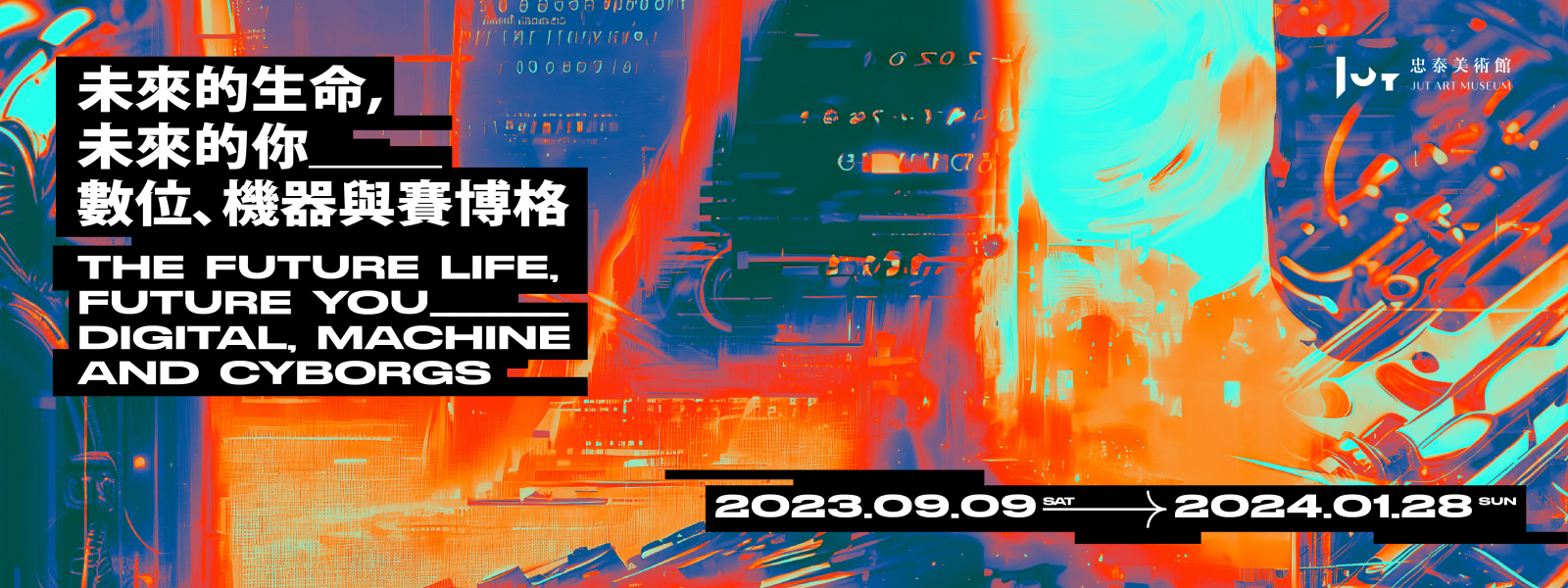
The Jut Art Museum in Taipei, Taiwan has continuously responded to topics related to “city” and “future” through contemporary art exhibitions and perspectives, and has launched the latest exhibition, The Future Life, Future You – Digital, Machine and Cyborgs, to contemplate on the situations and topics regarding future life forms co-created by humanity and technology. Curated by Bo-Cheng Shen, the exhibition features a total of 15 artists/art collectives, including Aiden Faherty, Hassan Ragab, Jake Elwes, JIZAI ARMS project team, Mal Bueno, Markos Kay, Martin Backes, Moon Ribas, Patrick Tresset, Universal Everything, Yi Chen, Wan-Jen Chen, Simple noodle art - Zi-Yin Chen & Gotop Chuang, Newyellow, and Hui-Yu Su, respectively from the UK, the US, France, Japan, Germany, Egypt, Spain, Mexico, and Taiwan. Combining art with technologies, such as AI algorithm, big data, deepfake, wearable device, and cyborg, the artworks on view reflect the artists’ individual and diverse imaginations about future life forms, and collectively pose the question: “what life is (for)?” The exhibition runs until January 28th, 2024. For more information about related events and admission discounts, please visit the museum’s official website.
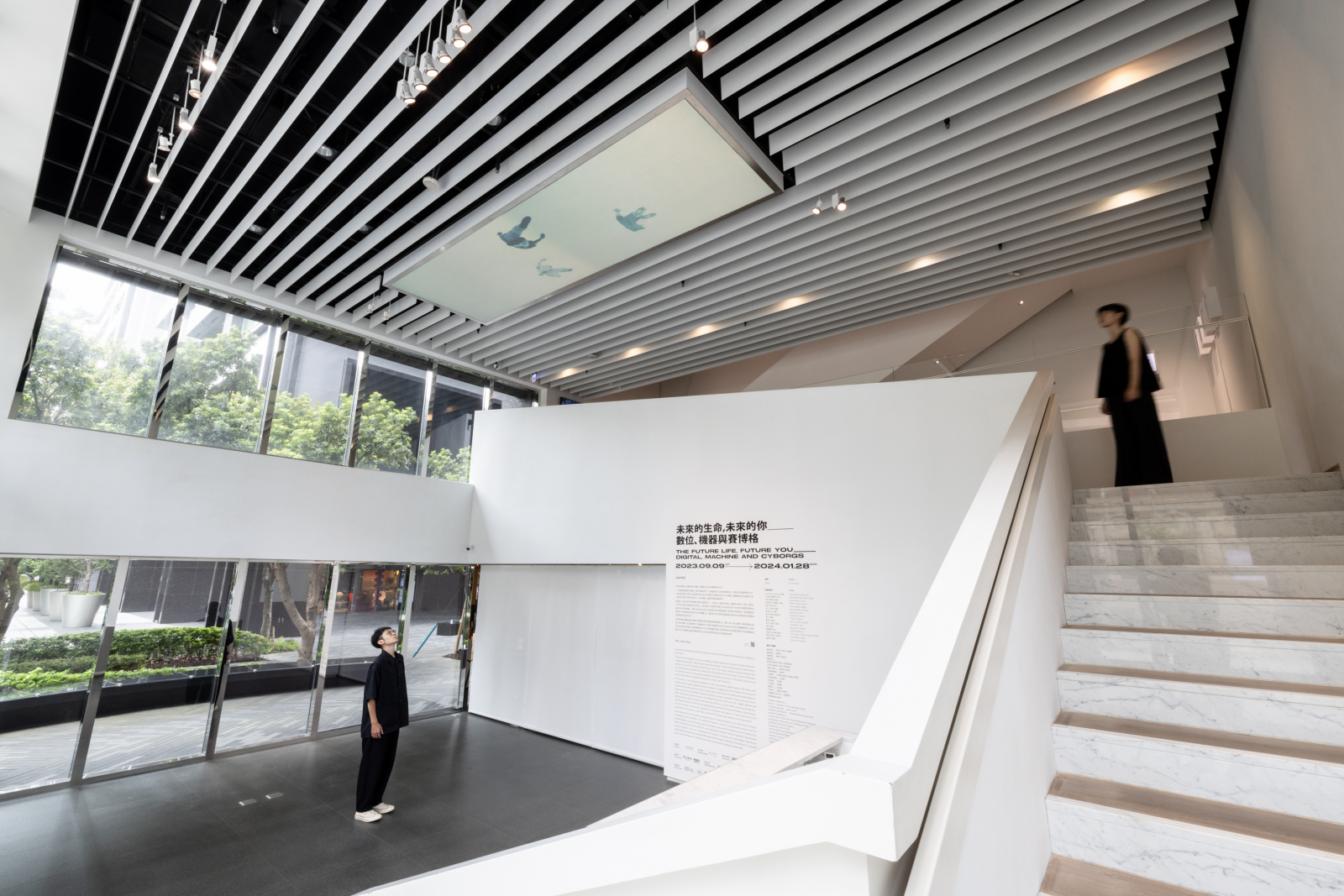
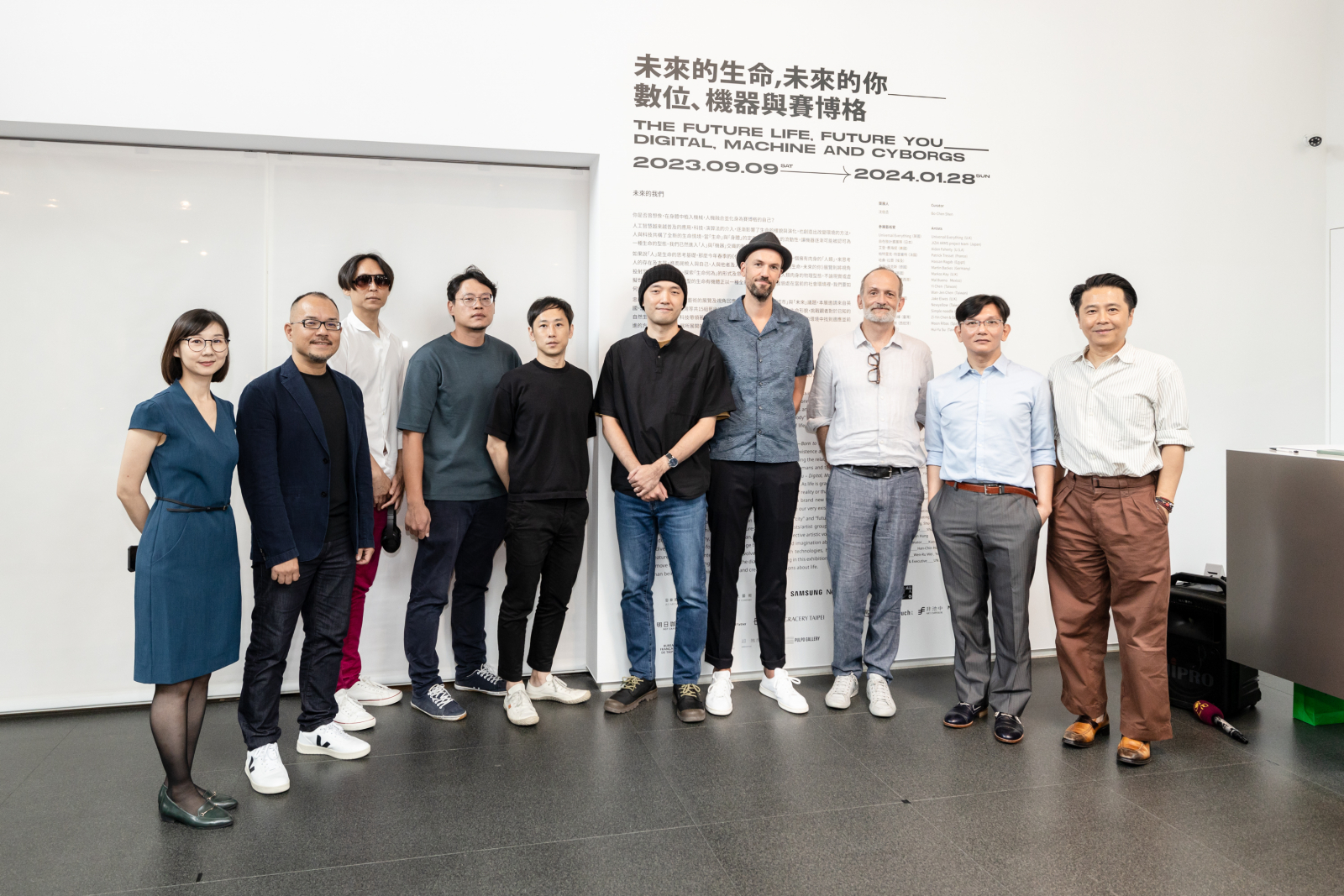
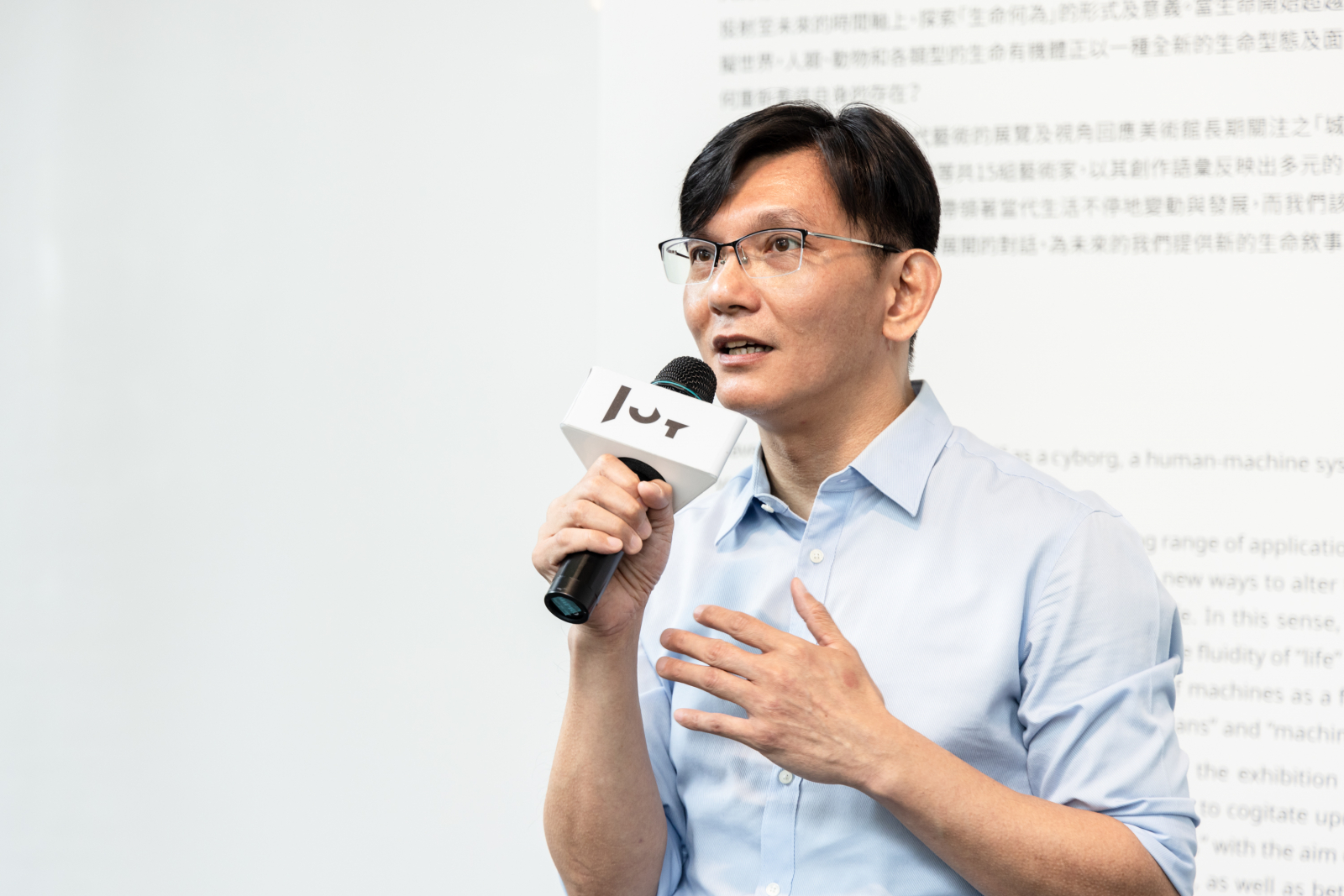
The Jut Art Museum invites curator Bo-Cheng Shen to curate the exhibition based on his long-term, research-based art project, “Evolutionary Cybernetic,” and start from the concept of viewing life as an ongoing process of development and creation to produce the contemporary art exhibition – The Future Life, Future You. The exhibition explores a new possibility from the dialectic perspective of art: when technology intervenes into everyday living and life, apart from the existing six kingdoms, has the “Technium” finally appeared? When “evolution” founded on the idea of the survival of the fittest intersects with “cybernetics” that posits the origin of technology in humanity, what new imagination about future life and living scenarios will emerge?
“Fluid Life and Body” – When Technology Destabilizes the Definitions of Life and Body

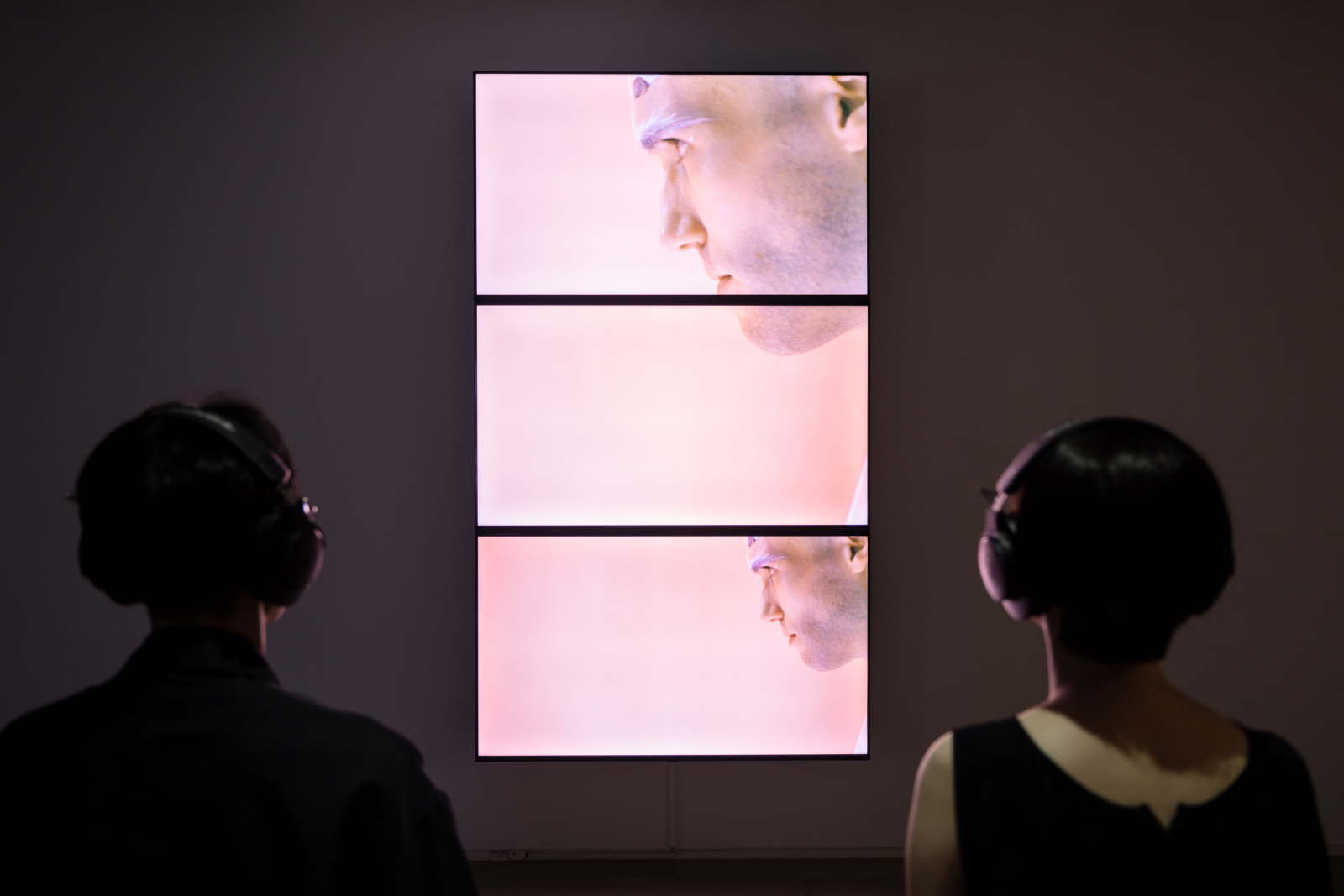
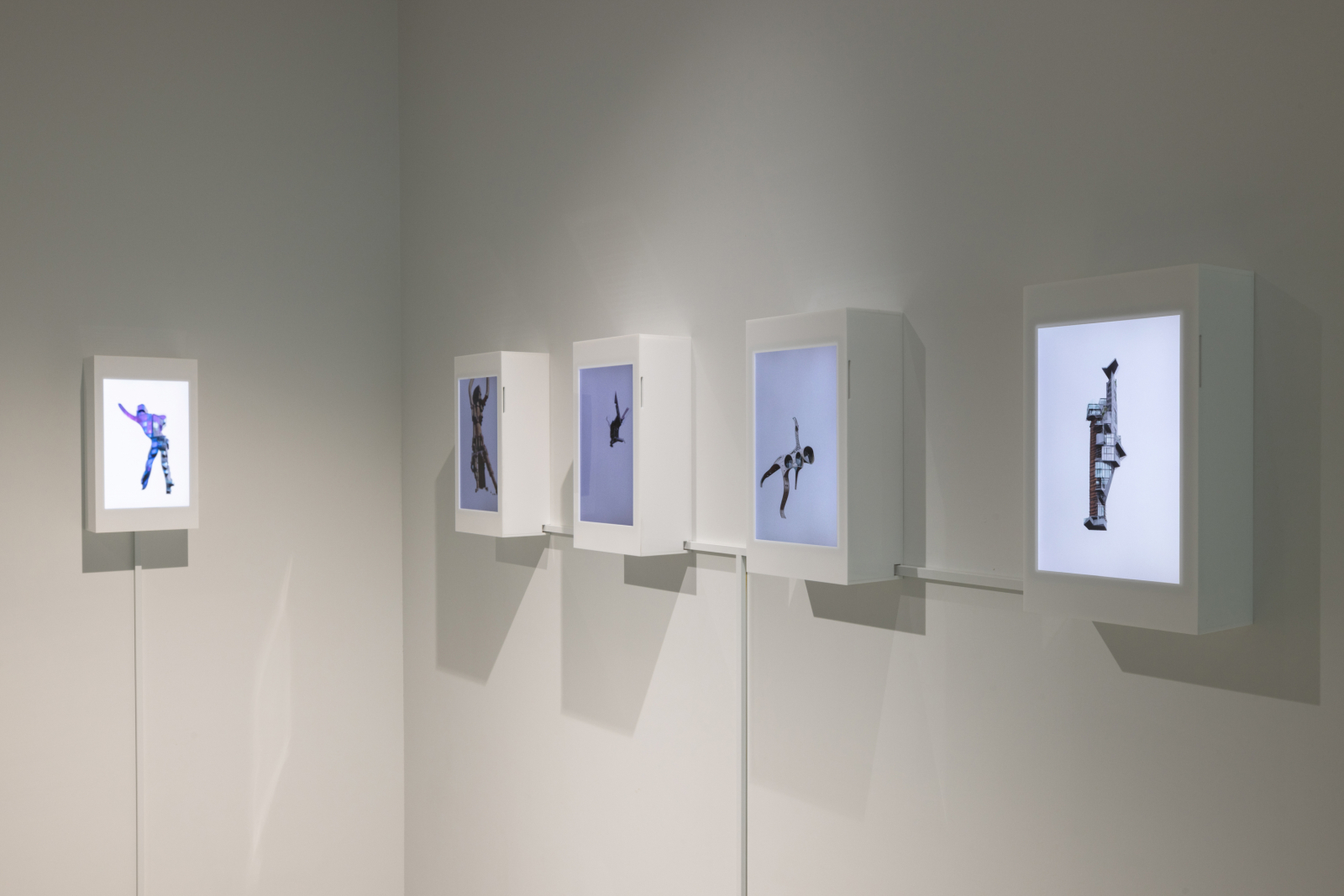
The fact that our view on life and bodily form are becoming more fluid through technology proves the existence of “artificial selection.” While the boundaries between human and animal, the organic and the inorganic, as well as reality and virtuality have grown increasingly blurry and destabilized, there are more ways to interpret and understand the forms of life and body. British artist Jake Elwes’s Zizi in Motion: A Deepfake Drag Utopia combines deepfake technology and the queer community to reflect on artificial intelligence and the idea of community, shattering rigid gender and body definitions. Taiwanese artist Hui-Yu Su’s The White Waters, a three-channel video work, deconstructs the biological boundary through the fluid bodies of human and snake in the classical text. Egyptian architect Hassan Ragab’s The Architectural Being transforms architecture from the “living machine” into a “living organism” that performs catwalk shows and dances enabled by the system of AI image generation.

In mid-November, the museum will further exhibit the celebrated work, Transfiguration, by the UK-based art collective, Universal Everything. This work features a walking figure, whose colossal body continuously evolves, reflecting the endless evolutionary process of life and humankind.
“You in the Digital and the Digital It” – The Image of Human and Life in the Algorithmic Environment
As life and body become re-defined at the intersection of evolution and algorithm, understandings of the “self” and “other” in the digital dimension will also be altered.
1.“You”: The Human Image in the Algorithmic Environment
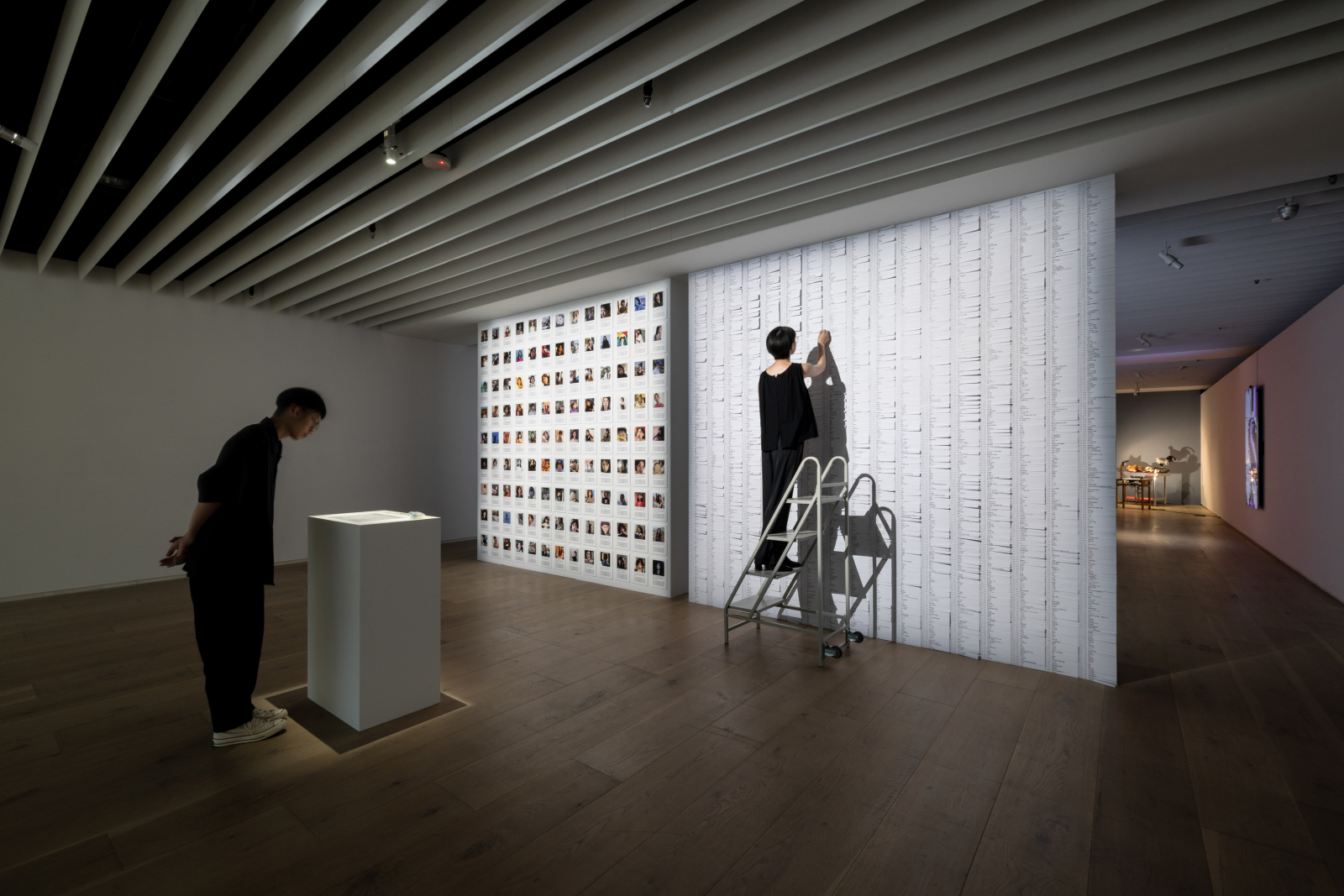
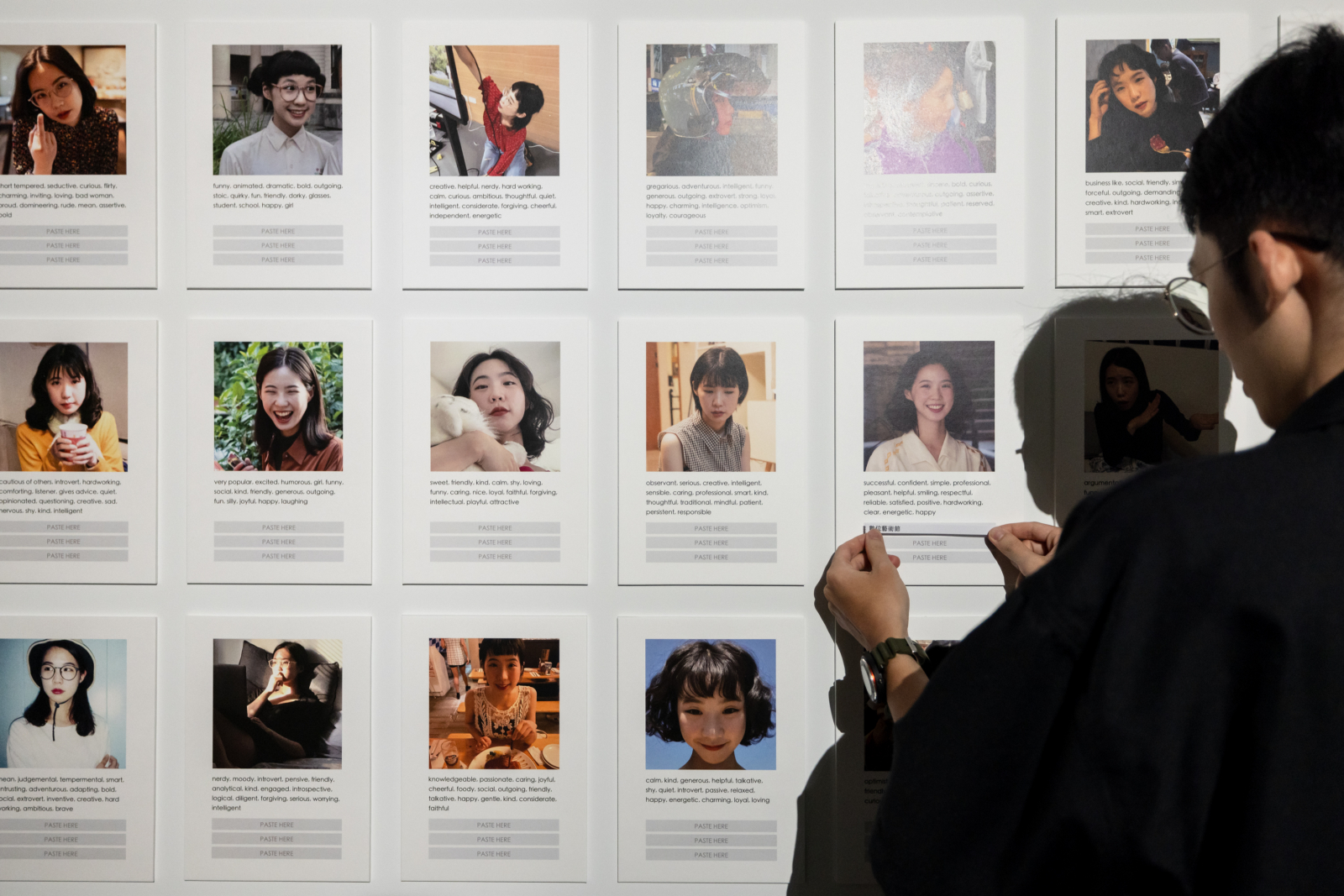
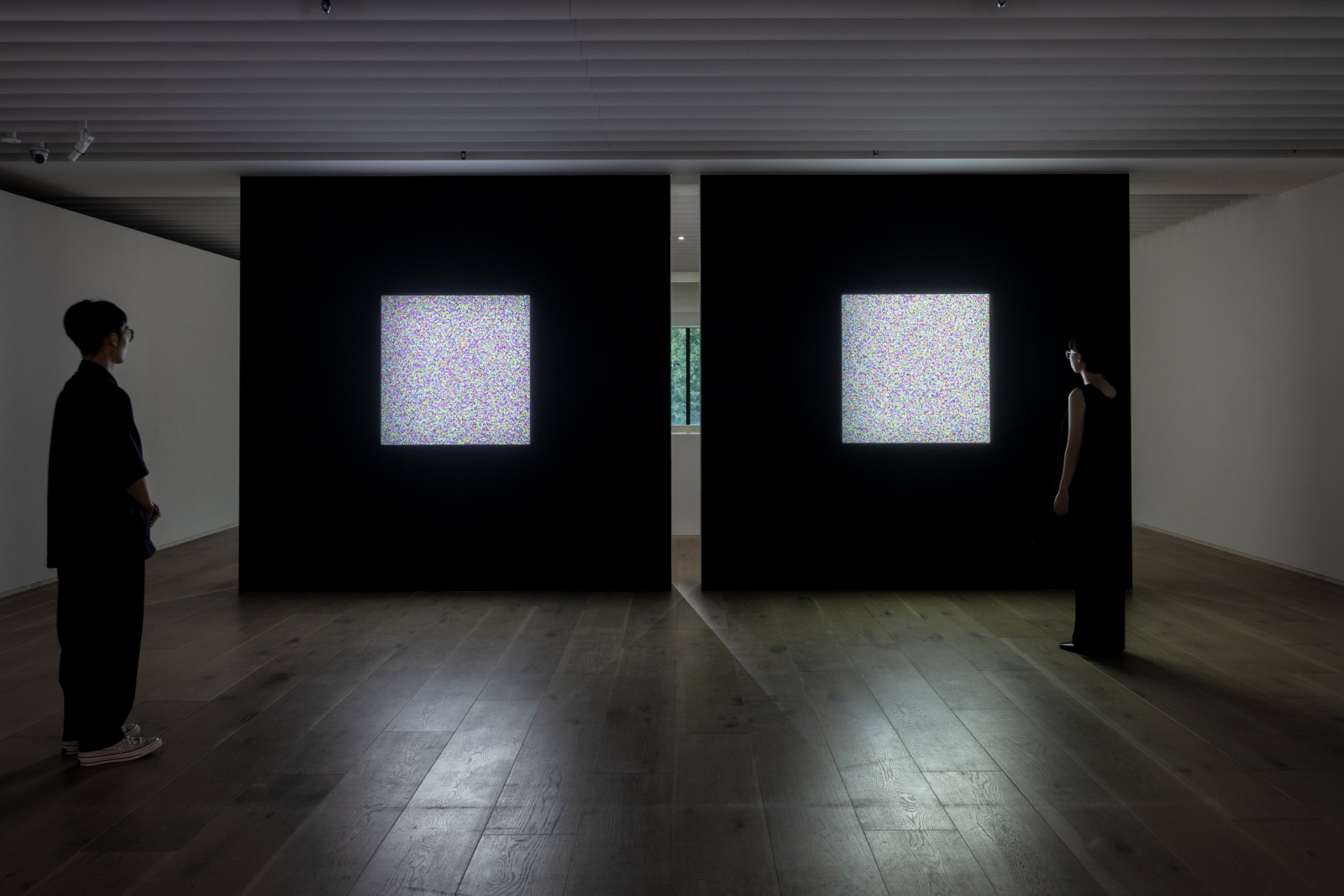
Taiwanese art collective, Simple noodle art – Zi-Yin Chen and Gotop Chuang, has just won the Prix Ars Electronica. In this exhibition, the art collective’s spatial and interactive installation, Inter net – Labeling me, presents AI identifying markers, Google search entries, and the image of “I” produced by “crowd labeling” of robots and the audience. Their single-channel algorithmic video installations, The Portrait – The Crowd’s Portrait of Me and The Portrait – My Self-Portrait, reveal noise-like images that are cognitive portraits delineated with one’s digital footprints.
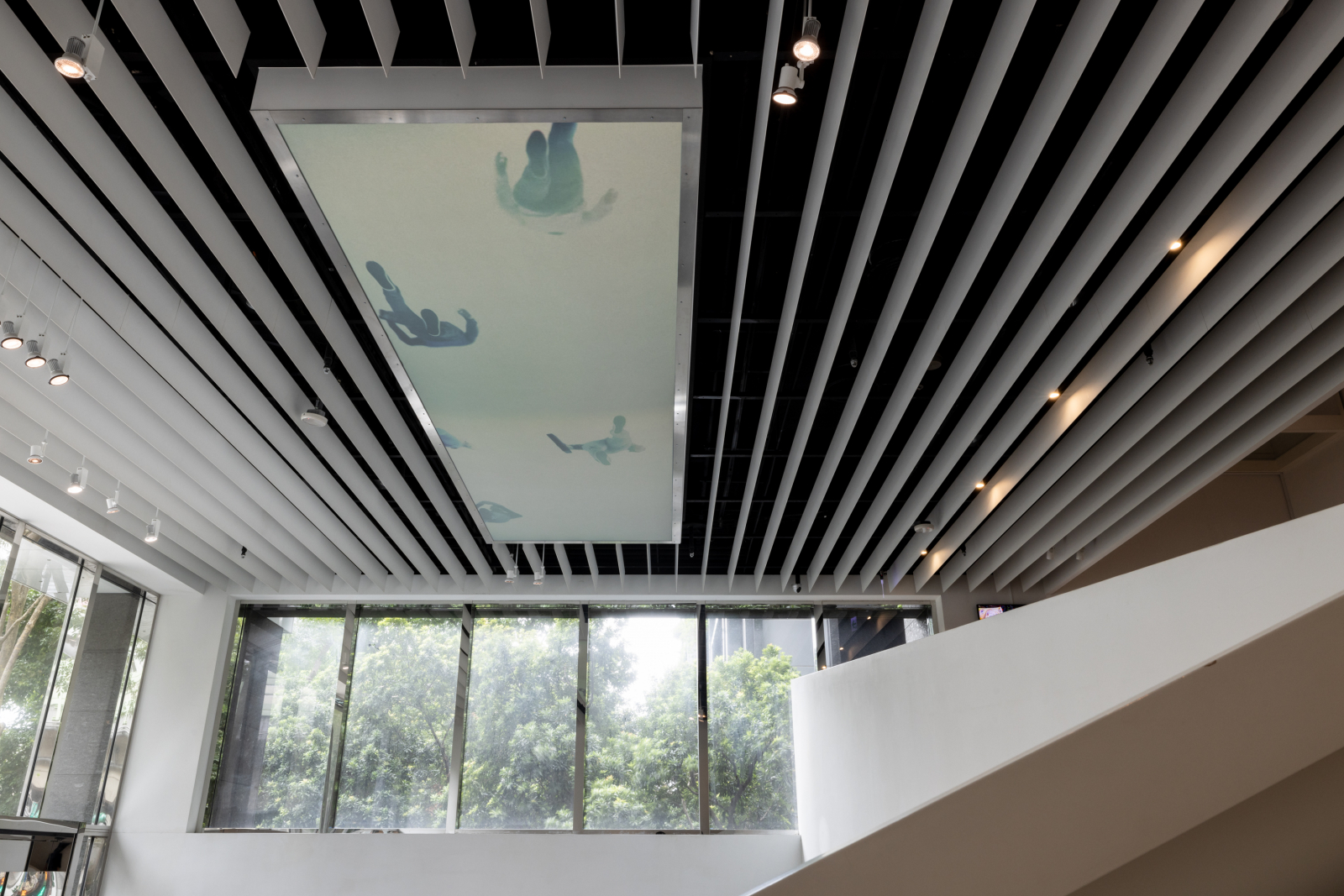
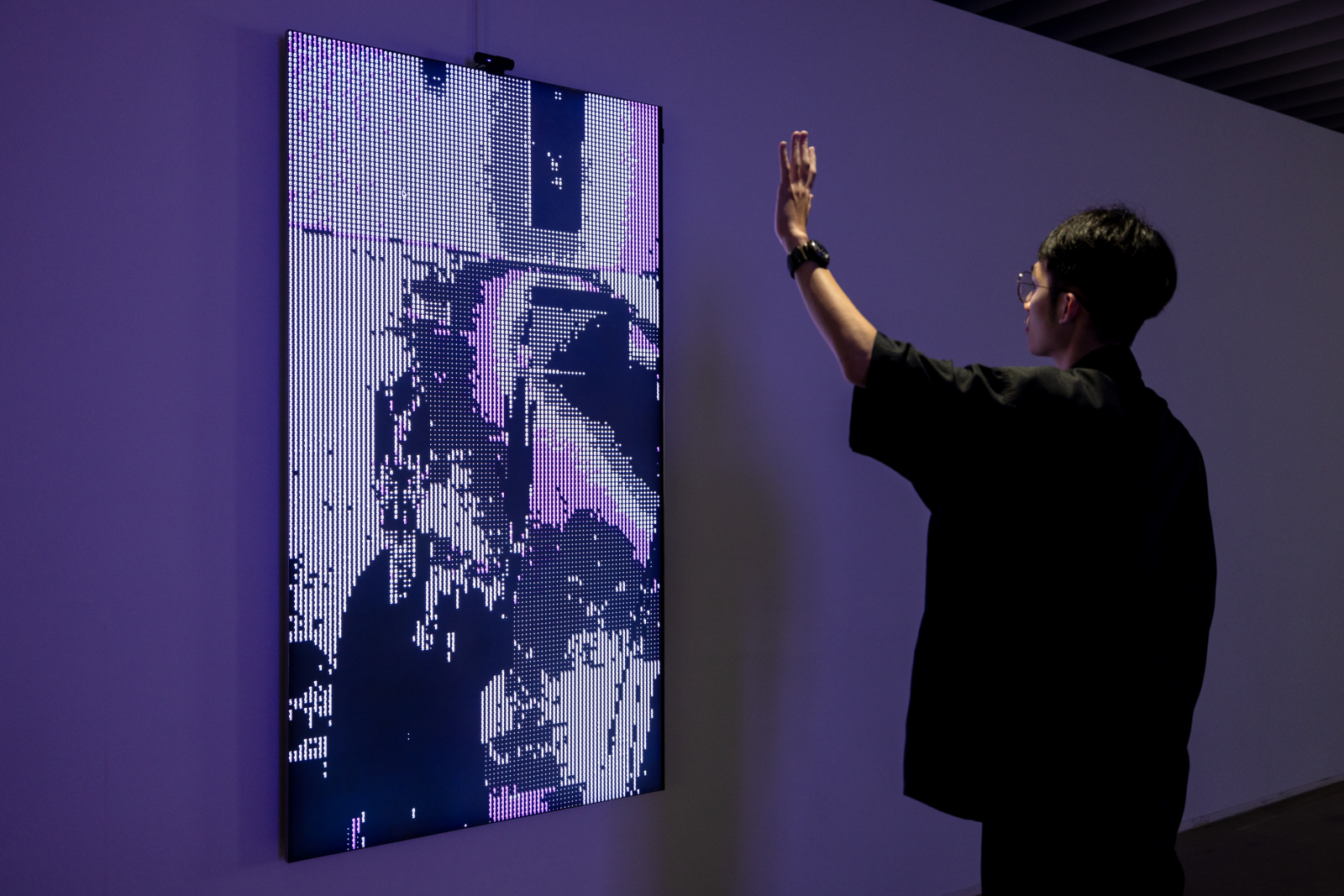
Taiwanese artist Wan-Jen Chen’s Stagger Moment on view at the museum’s patio enables the audience to view the three-dimensional human figures created by the artist from a bottom-up angle. Through background erasure and digital stitching, the figures seem to be walking in an endlessly extending cycle of emptiness in the digital realm. Final by Mexican artist Mal Bueno is premiered worldwide in this exhibition. Images of the audience members interacting with the work are uploaded to the digital domain to intuitively present the “you” in the algorithm.
2.“It”: New Life Forms Born from Algorithms
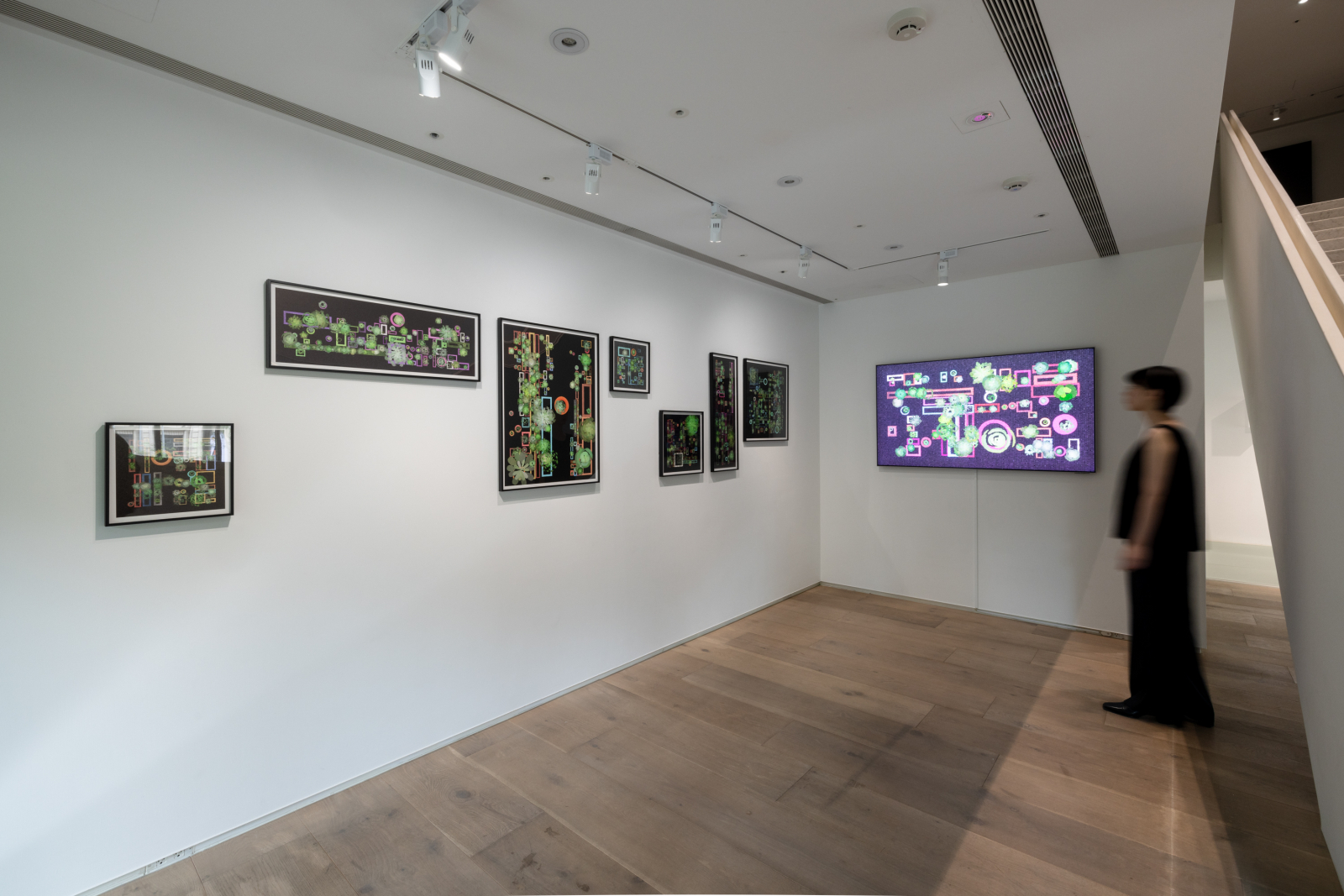
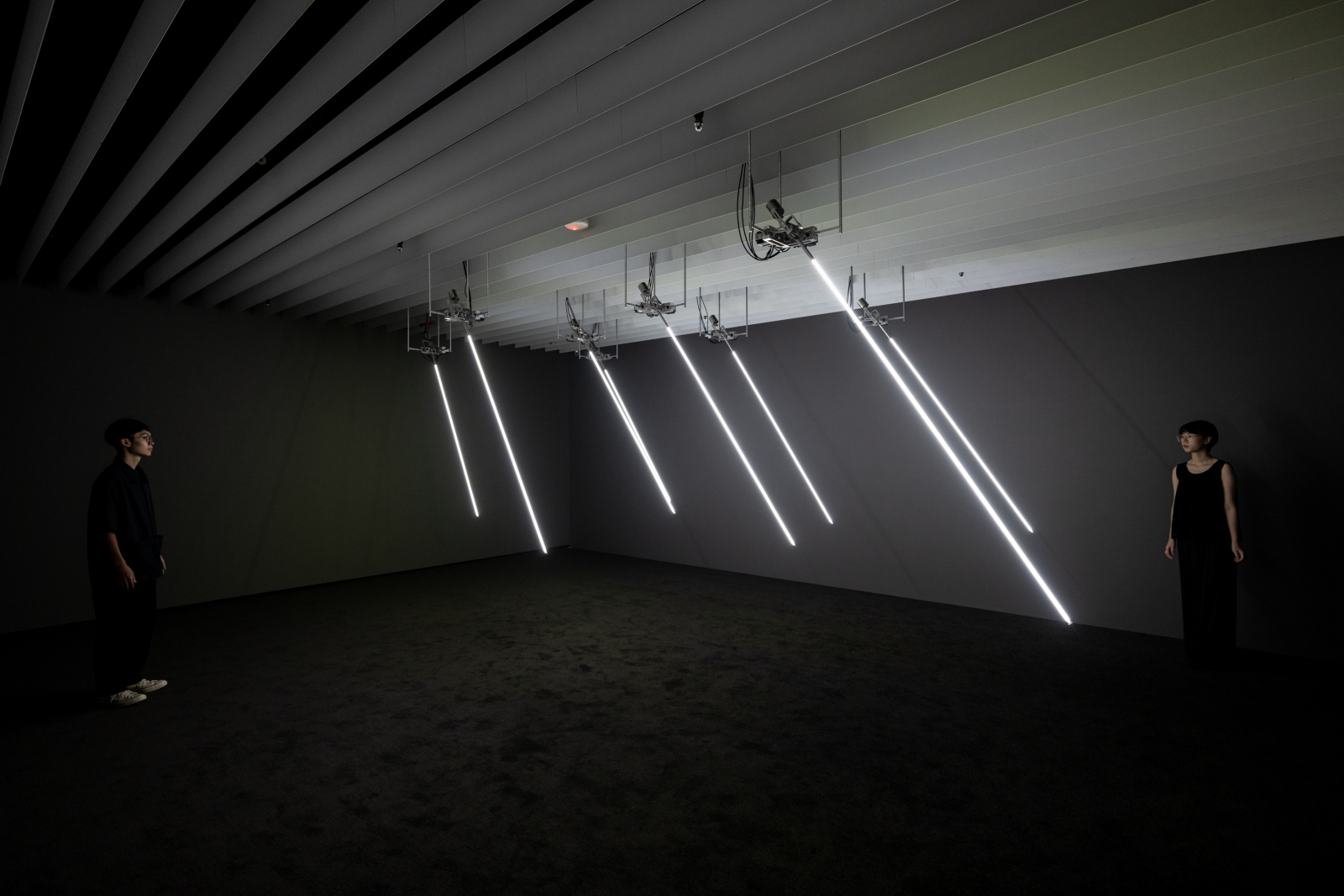
Taiwanese artist Newyellow’s brand-new installation of real-time generative imagery – Generative Sketch: Succulent Garden, comprises algorithmically generated sketches of succulent plants, and deconstructs the everyday landscape through geometric forms produced by a computer program. Yi Chen’s Windy Field, an installation based on artificially simulating movement created by wind, collects and experiments with air volume, wind direction and sonic information of wind. Based on algorithmically generated data imported into the mechanical installation, the reed-like, luminary work imitates the natural movements in blowing wind.
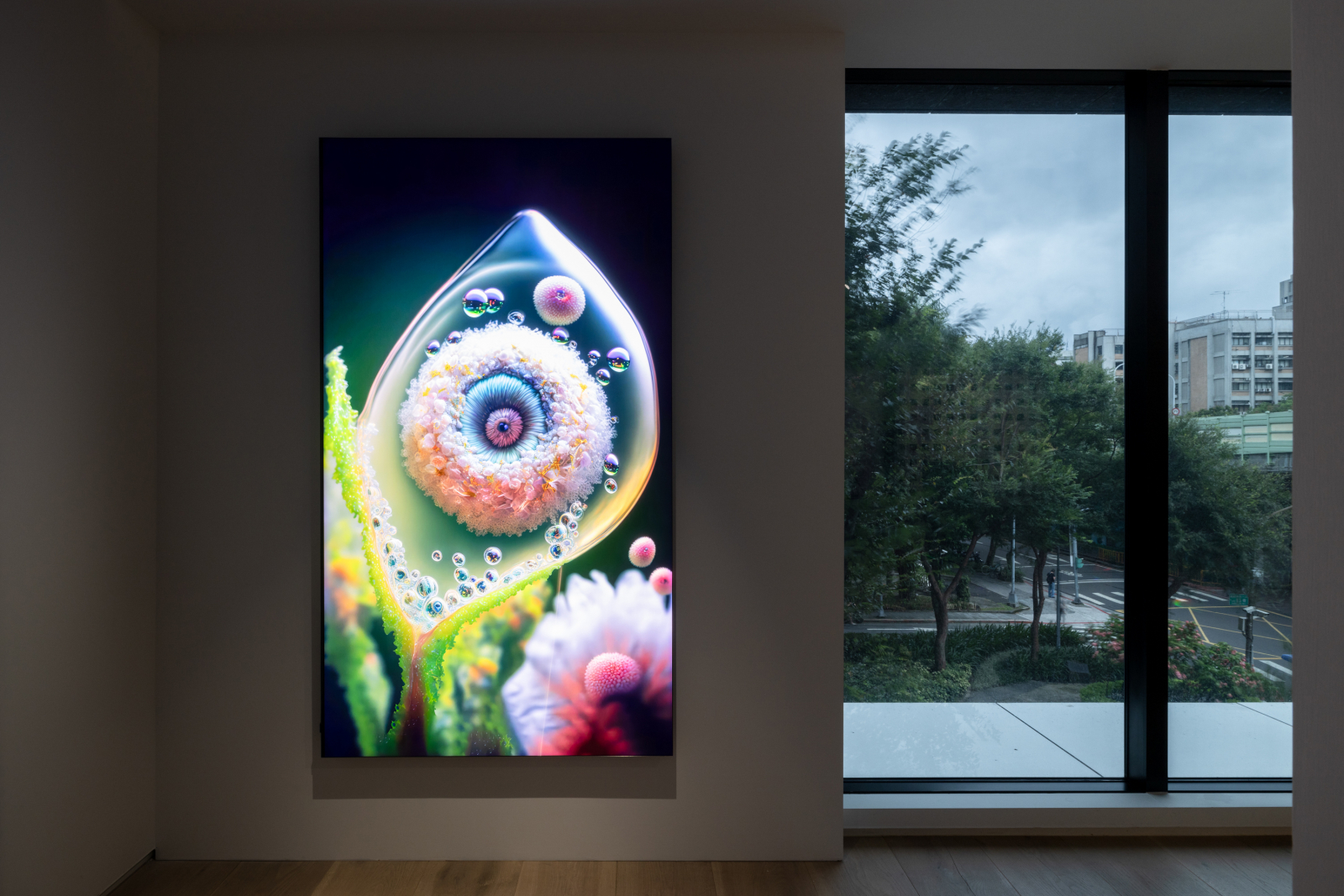
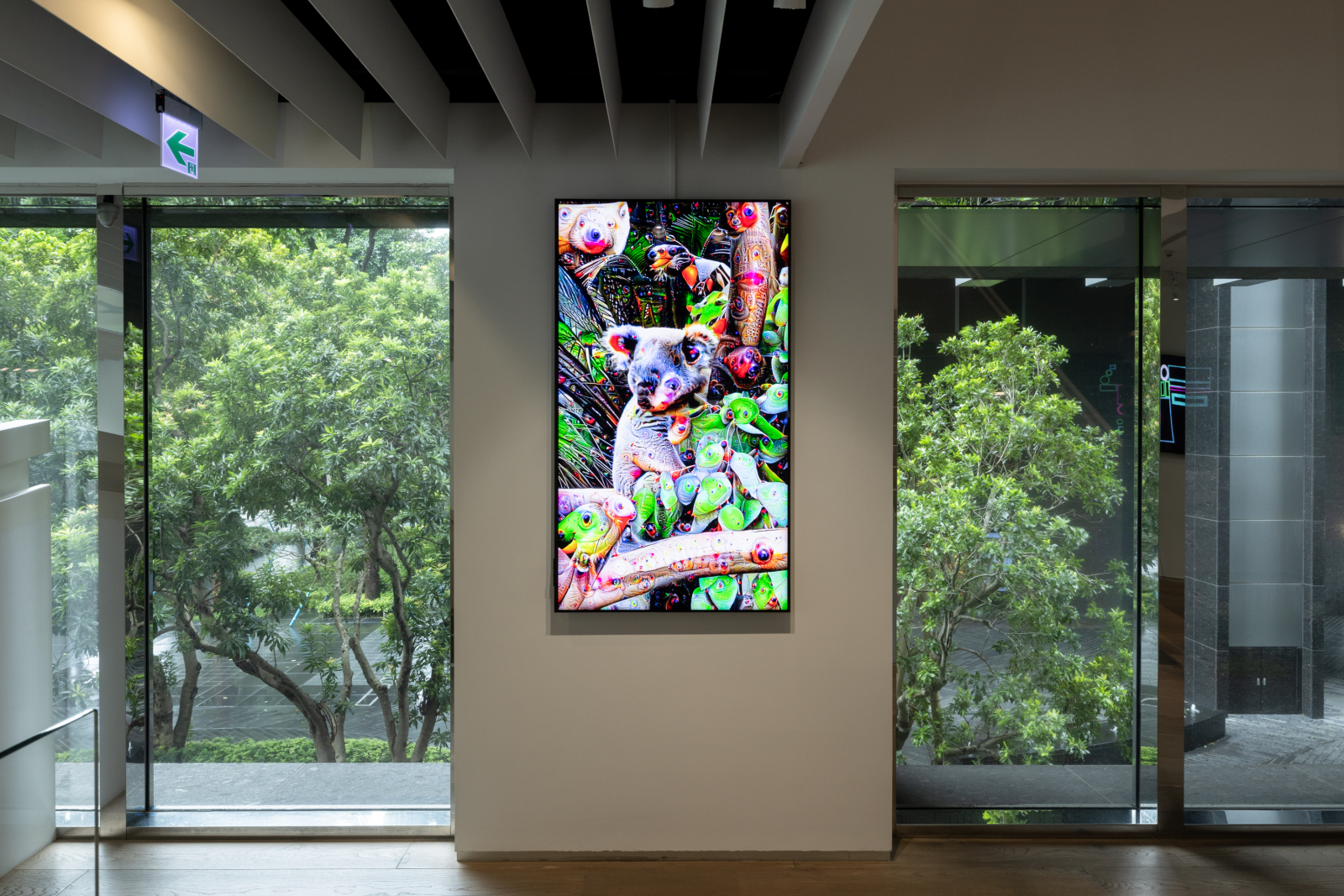
British artist Markos Kay’s aBiogenesis is an attempt to inquire into the origin of life by creating life. “Coolacloy,” who has over half a million followers on TikTok, is created by American artist Aiden Faherty, whose A Journey Through the Transcendental Forest is exhibited for the first time internationally. Using AI deep learning model to capture the ecosystem generated by information from nature, the work transports the audience into Alice’s wonderland where reality and imagination are seamlessly integrated.
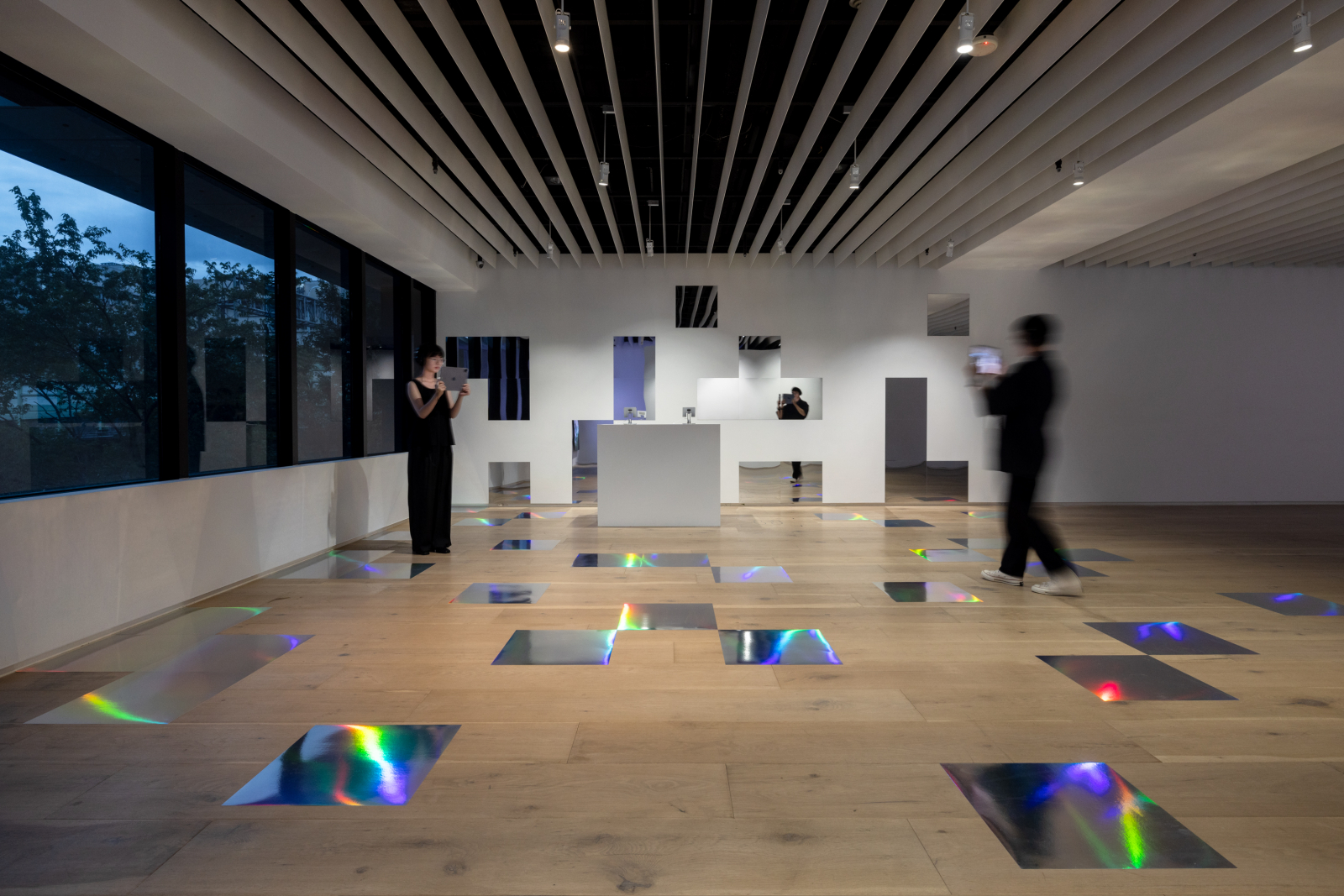

Using a mobile device, German artist Martin Backes’s augmented reality work – What do I know? I’m just a machine?!, allows the audience to encounter and dialogue with a spherical robot floating in the museum, revealing a new life form in the digital realm through augmented reality.
“Robot, Human and Cyborgs” – Scenarios of Life Co-created by Human and Technology
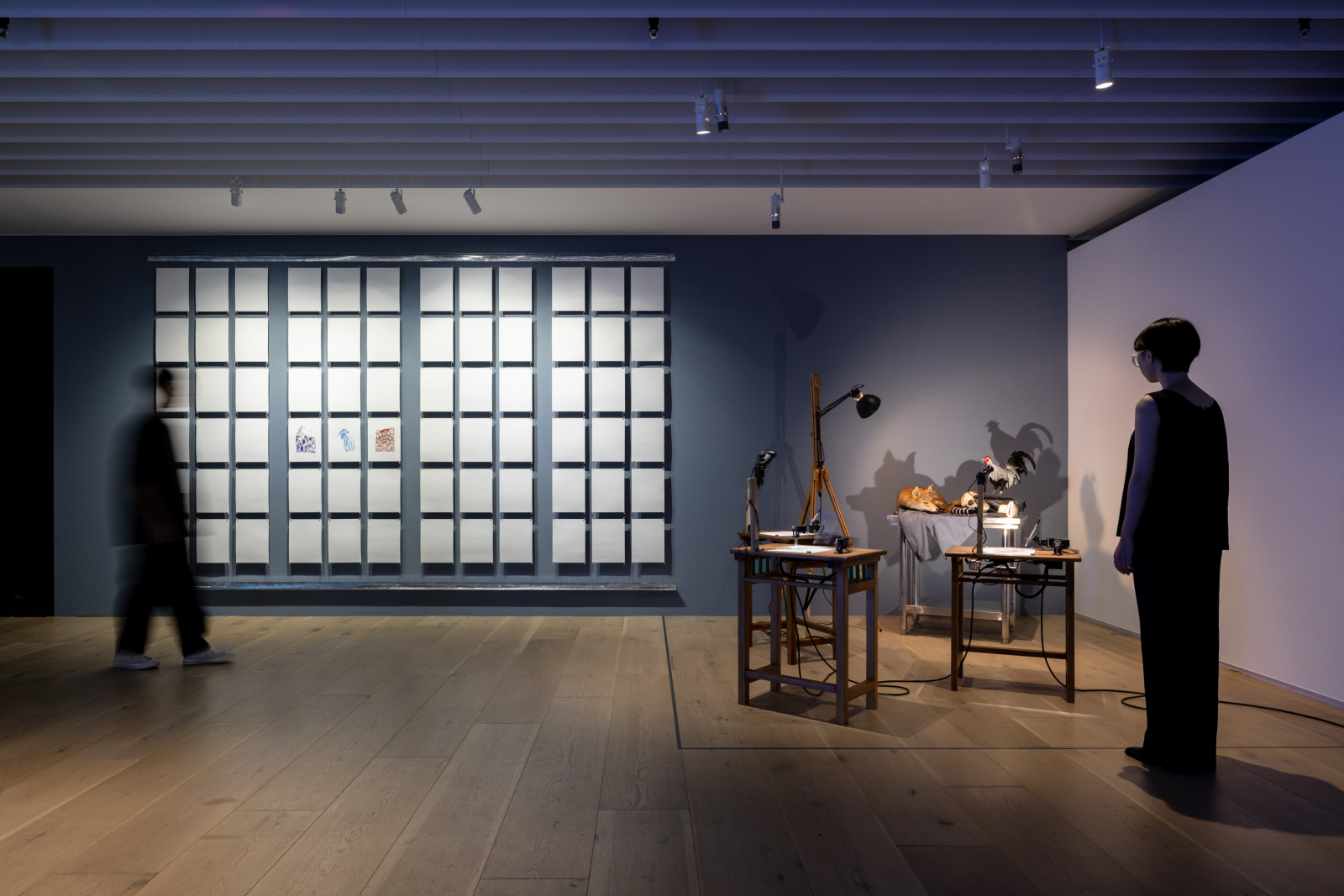
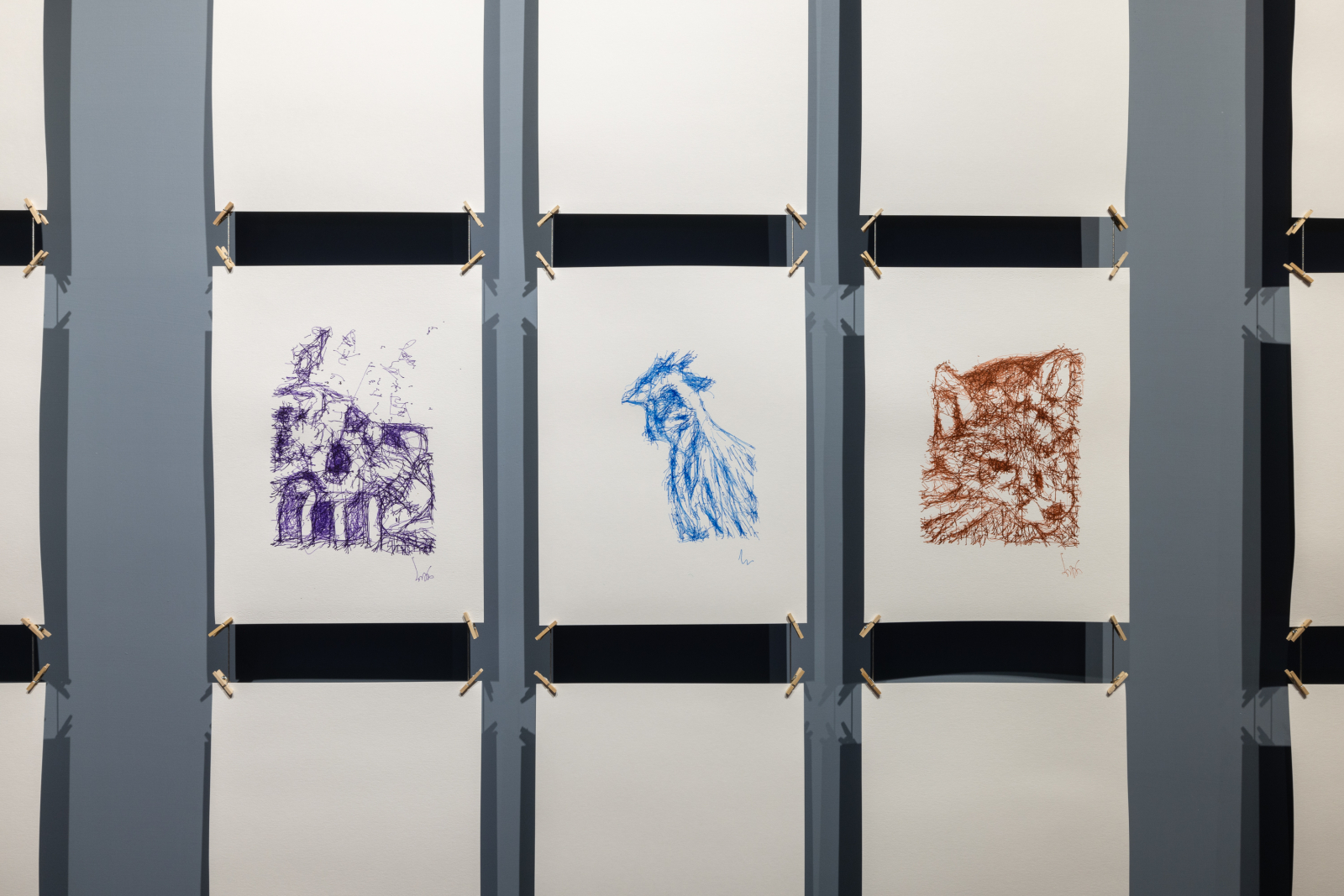
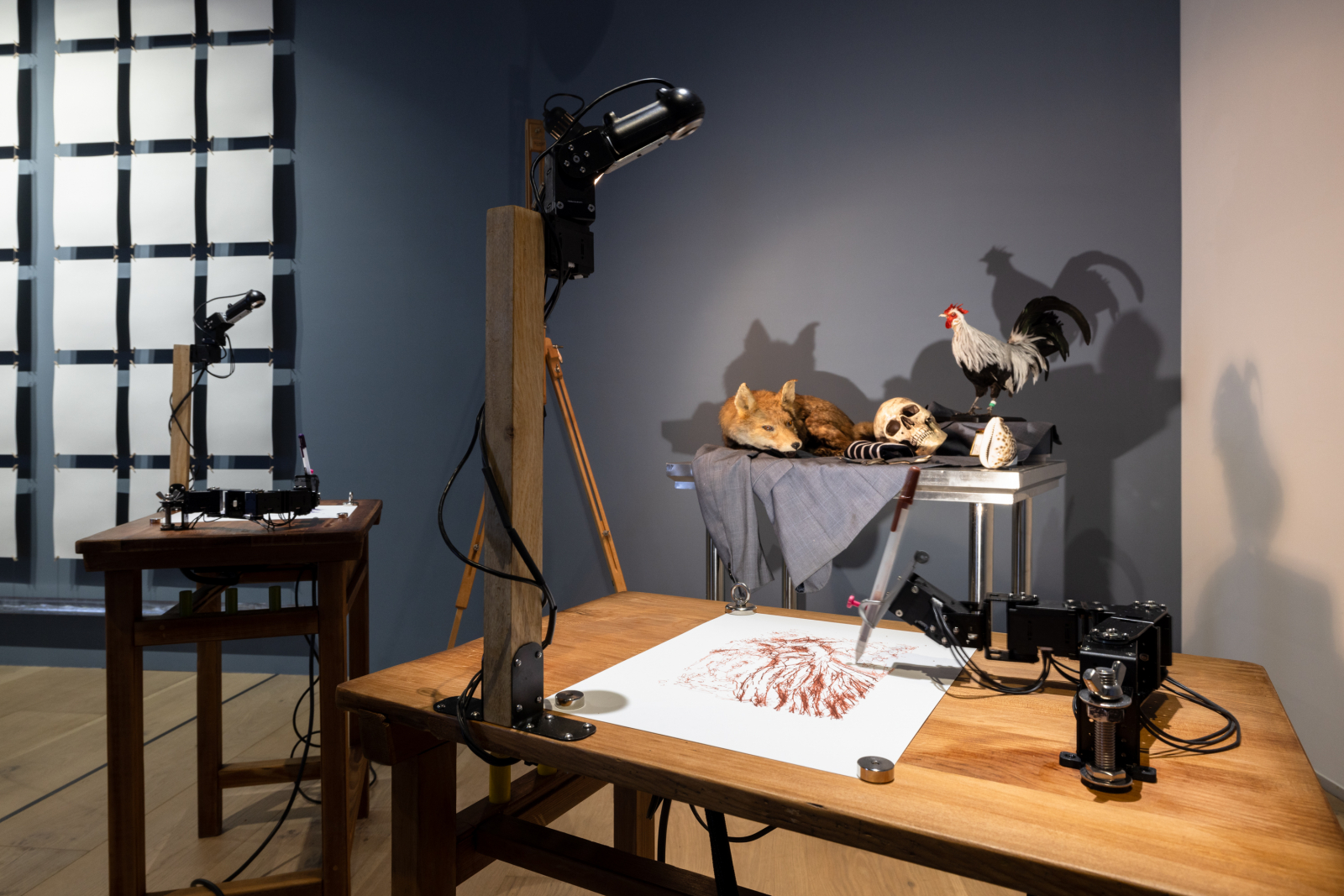
Kevin Kelly, who forecasts technology trends, has put forth the idea of the “Technium,” asserting that technology should be viewed as the seventh form of life. Today, the development of artificial intelligence has seemed to echo his idea, foretelling a new relational network between human and machine. French artist Patrick Tresset, through his Human Study #2, La grande Vanité au Coq et au Renard, etc..., contemplates on the multiple possibilities between robot and human, while reflecting on whether a “creation” produced by a robot can be considered a creative work, and even be called “art.”
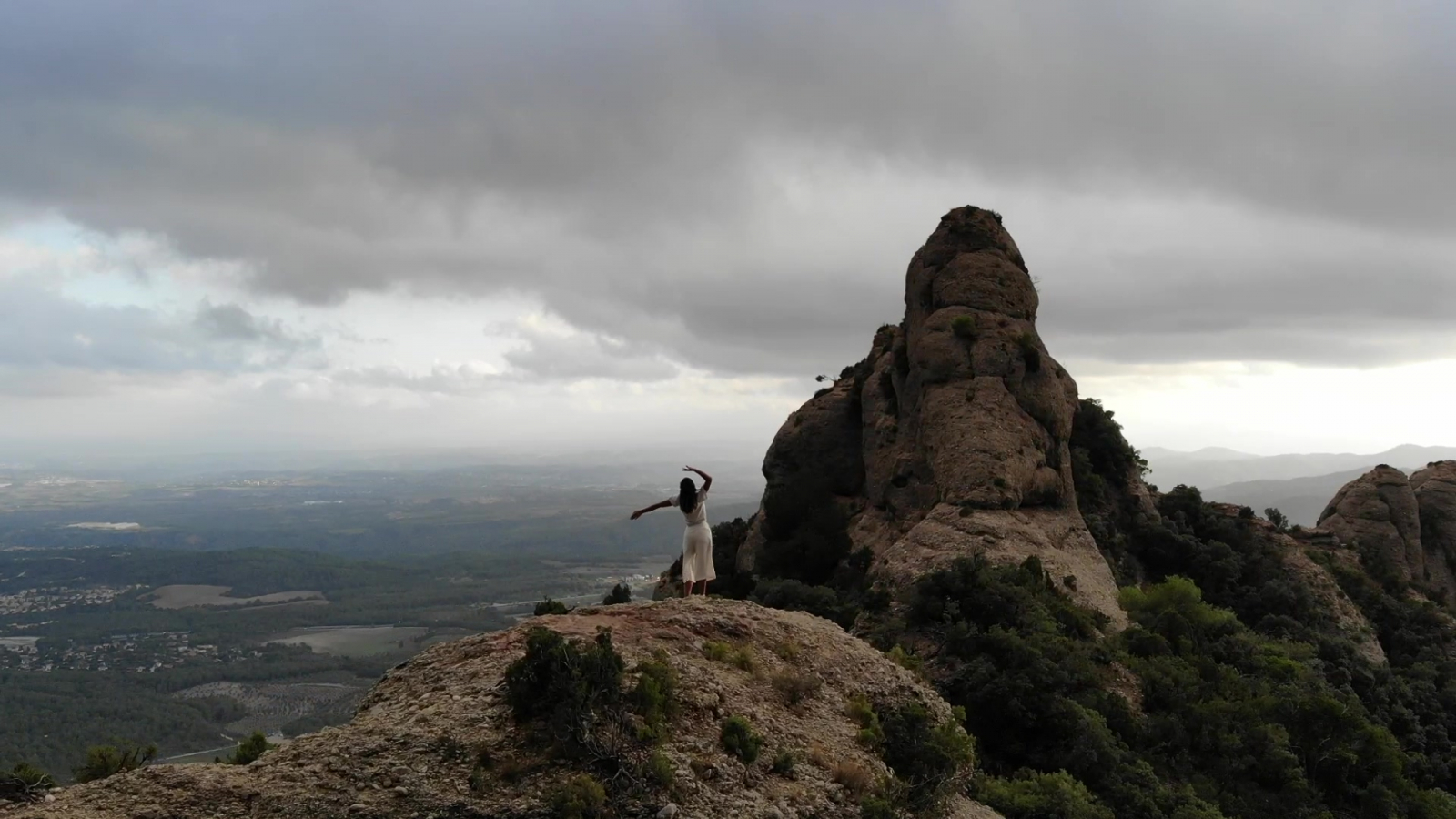
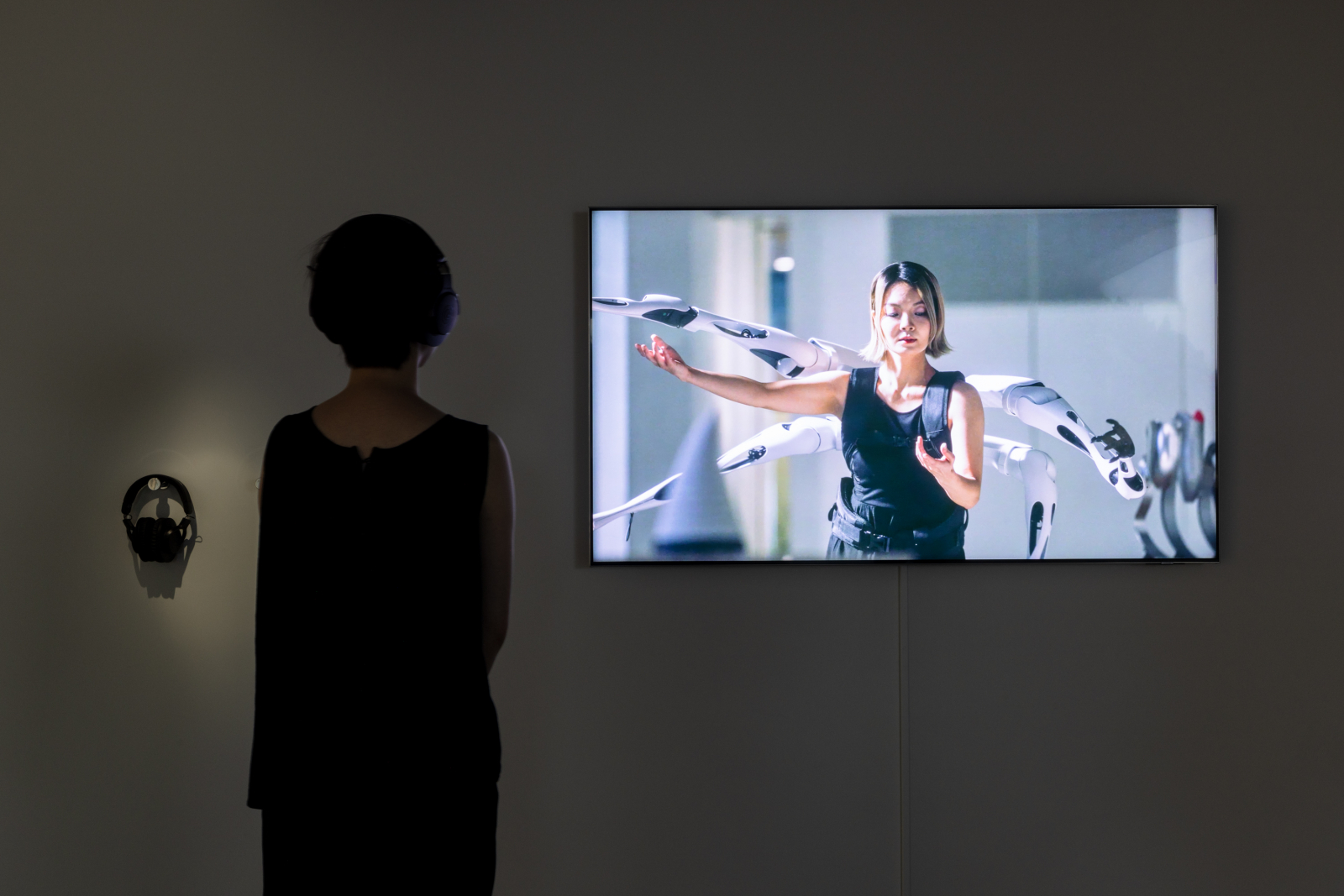
Spanish artist Moon Ribas is reputed the world’s first female cyborg artist. Through implants of seismic sensors, she merges her own body with the rhythm of the earth. Her work, Waiting for Earthquakes in Montserrat, is a dance duet, in which planet Earth controls the tempo and intensity, whereas the artist interprets the dance based on the intensity of seismic waves that she receives. JIZAI ARMS project team stems from a lab research project at Tokyo University in Japan. Utilizing the add-on, wearable robotic module called JIZAI Arms, the project explores potential interactions between multiple “digital cyborgs” in a cyborg society.
Information
Venue|Jut Art Museum, Jut Headquarter Lobby (No.178, Sec. 3, Civic Blvd., Da'an Dist., Taipei City 106, Taiwan)
Opening Hours|TUE-SUN 10:00-18:00 (Closed on Mondays)
*Please see the exhibited time of Jut Headquarter Lobby’s work on Jut Art Museum website
Admission|General TWD 100, Concessions TWD 80 (Student, seniors aged 65 and above, and groups of 10 or more)
Free Admission for the disabled and a companion, children aged 12 and under (Concessions or Free Admission upon presentation of valid proof)
Student Day|Free Admission once on WED (With valid student ID)
Website|https://jam.jutfoundation.org.tw/en/exhibition/107/4372
Artists|*The list shows in order of stroke numbers by artists’ Mandarin surnames.
Universal Everything (U.K), JIZAI ARMS project team (Japan), Aiden Faherty (U.S.A), Patrick Tresset (France), Hassan Ragab (Egypt), Martin Backes (Germany), Markos Kay (U.K), Mal Bueno (Mexico), Yi Chen (Taiwan), Wan-Jen Chen (Taiwan), Jake Elwes (U.K), Newyellow (Taiwan), Simple noodle art - Zi-Yin Chen & Gotop Chuang (Taiwan), Moon Ribas (Spain), Hui-Yu Su (Taiwan)
Organizer|Jut Art Museum
Executive Organizer|Hu’s Art Company
Official Partner|Samsung Neo QLED 8K
Cultural Partner|eslite member
Event Partners|MOT CAFÉ、NOKE JUT RETAIL
Official Hotel Partner|Hotel Gracery Taipei
Media Partners|PanSci、ARTouch、Art Emperor、MOT TIMES
Special Thanks|Bureau français de Taipei、Institut français、Goethe-Institut Taipei、Dimension Plus, PULPO GALLERY
The press kits can be downloaded in the link https://reurl.cc/o5YDxj
Standard Usage for Images: Photo credit/by must be given where applicable, and please indicate © Jut Art Museum.
